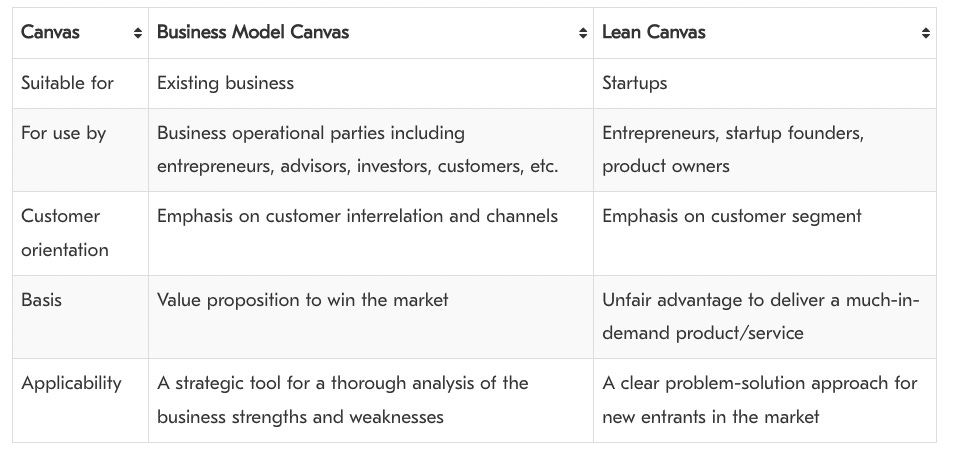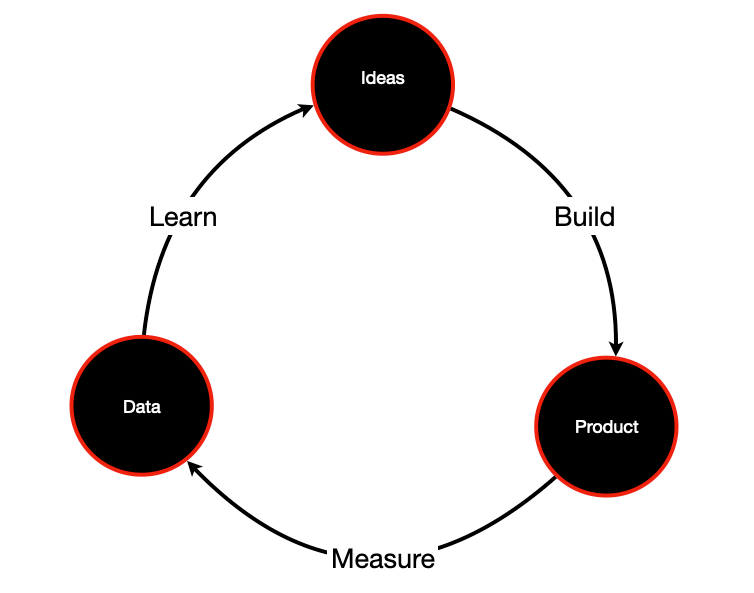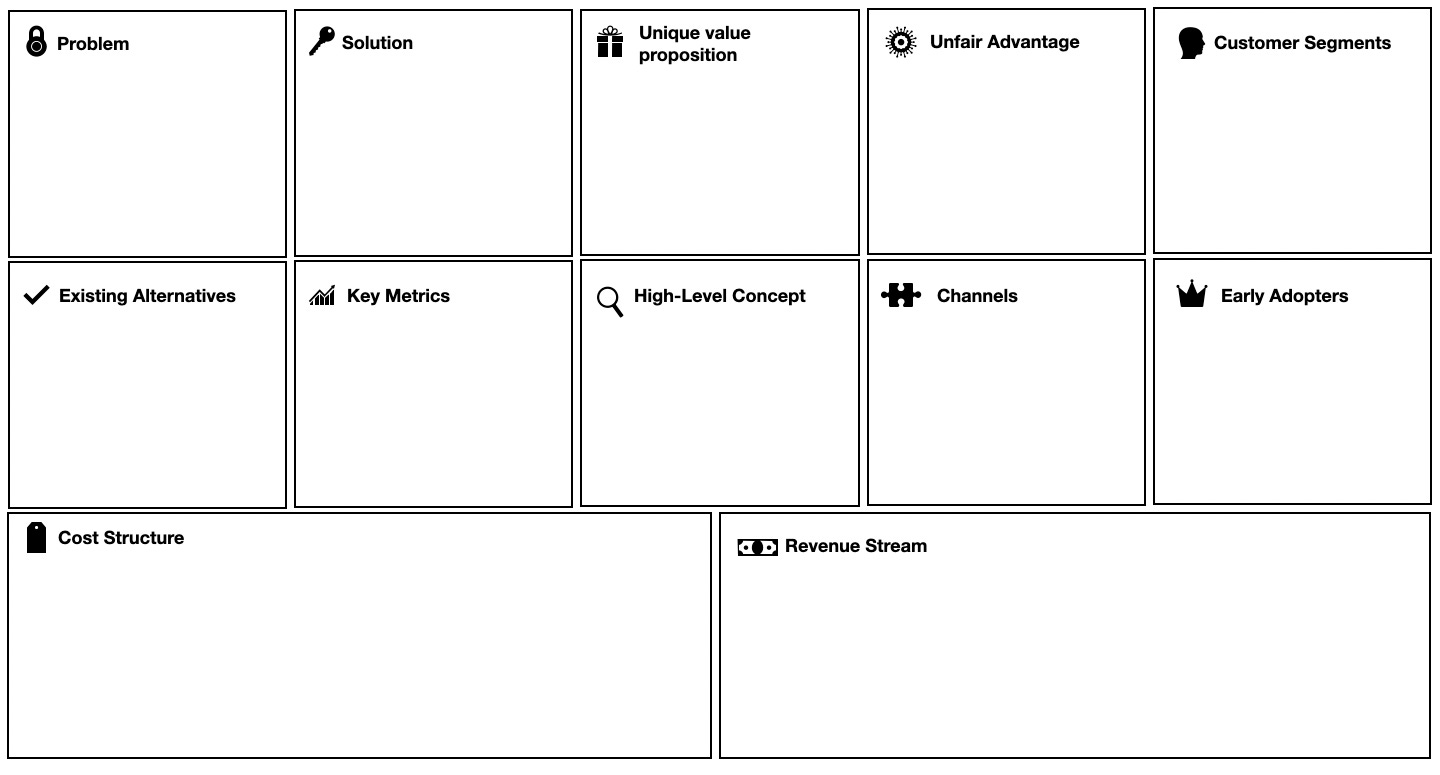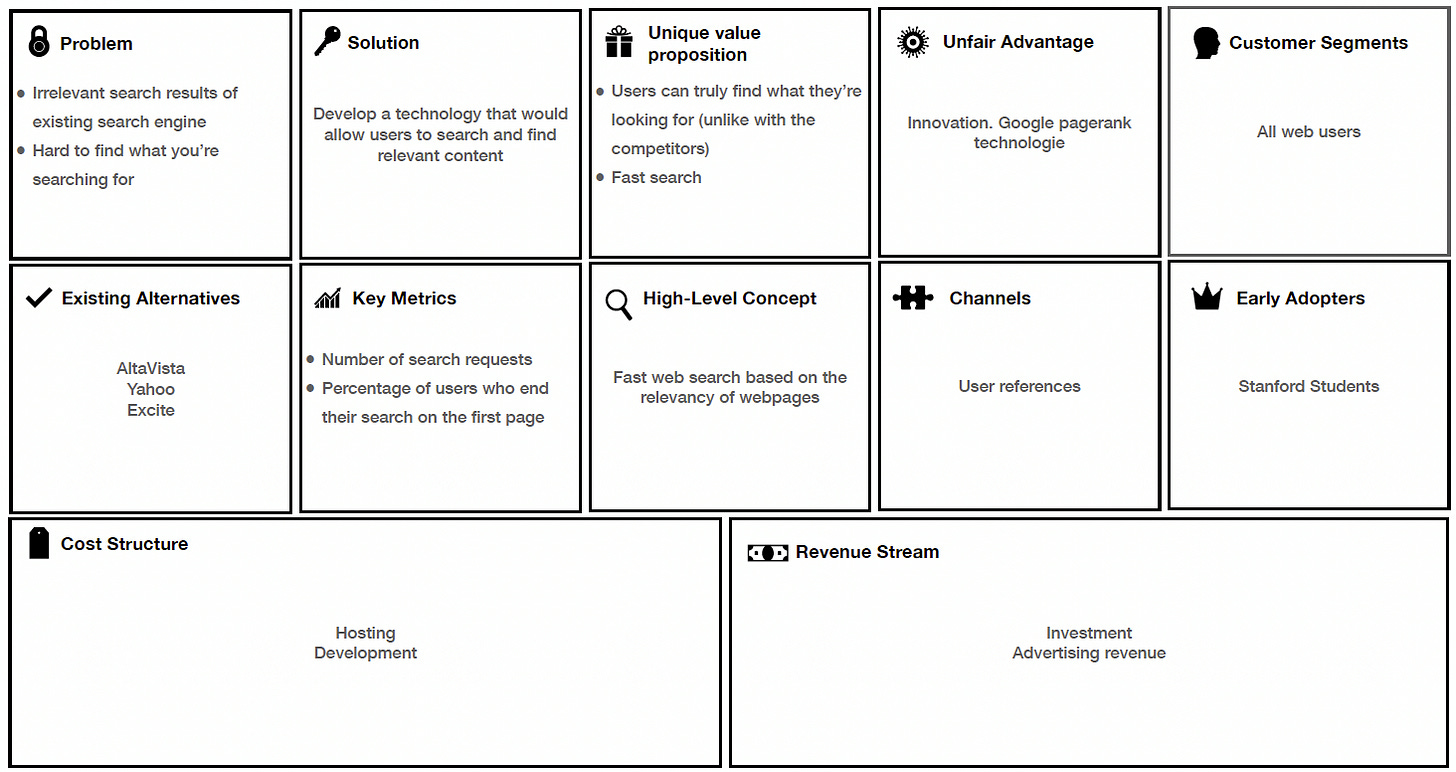The Lean Canvas Approach
“My main objective with Lean Canvas was making it as actionable as possible while staying entrepreneur-focused” – Ash Maurya
What is a Lean Canvas?
Lean Canvas is a 1-page business plan template created by Ash Maurya that helps you deconstruct your idea into its key assumptions. It is adapted from Alex Osterwalder's Business Model Canvas and optimized for Lean Startups. It replaces elaborate business plans with a single-page business model.
The Lean Canvas includes aspects for startups to deal with uncertainty and risk. He added the elements Problem and Solution as well as Key Metrics and Unfair advantage. The Lean Canvas also reflects the principles of the ”Lean Startup” approach build-measure-learn.
Lean Canvas: Key Principles
There are three main principles of Lean Canvas that focus on helping entrepreneurs to create and organize their business ideas.
Speed of Use: Lean Canvas is a tool that can be used quickly and easily. This is because it is a one-page document. This makes it especially useful for entrepreneurs who are still in the process of validating their business ideas.
Focusing on High-Risk Factors: The Lean Canvas framework also places an emphasis on high-risk factors, such as market risk and technical risk. This is because start-up businesses often have to deal with a high degree of uncertainty and risk.
Prioritizing Actionable Items: The final principle of Lean Canvas is that it helps entrepreneurs prioritize actionable items. This is important for start-up businesses because they often have limited resources, and need to focus on the most important tasks in order to remain competitive.
There are also nine essential sections in the Lean Canvas, each of which represents a crucial element of the business. These include problem, solution, key metrics, unique value proposition, unfair advantage, channels, customer segments, cost structure, and revenue streams. I will explain in detail each of these sections.
Why use the lean canvas
There are several reasons why you might want to use the Lean Canvas:
It focuses on understanding the problem you are trying to solve, this allows you to better understand the customer.
It includes a research-based approach, as it focuses on validating your assumptions.
Contains key metrics to check that you are sailing on the right course.
You stay lean because you focus on the speed and traction of your idea.
Faster time-to-market because the idea-to-product transition is smoother.
The Lean Canvas also focuses on capturing a unique place in the market.
The Benefits of Using Lean Canvas
Besides the brevity and objectivity of this 20-minute tool, there are other advantages in using the Lean Canvas, such as:
Focus on the solution. Especially when compared to complicated typical business plans, Lean Canvas permit the stakeholders to adjust their focus on problem-solution relation. That makes the hypotheses simpler and clearer.
User-friendly design. This one-page canvas encourages all the team members to take part in the development and fulfillment of ideas. Also, there is little space available – on purpose – which compels to reduce the analysis to what is completely fundamental, leaving aside unconnected and trivial data.
From entrepreneurs to entrepreneurs. The method has been created by businesspeople. They are aware that the business plan is for the company owner and team – it will seldom be present to outsiders. Therefore, there is no need to waste time and energy on details and accessories.
How to use lean canvas
Lean Canvas puts all the information you and your team need to visualize and analyze together, in a single canvas, eliminating unrelated and irrelevant details. The focus, here, is to avoid waste – of time, energy, processes, and money – just as Lean Startup methodology encourages.
So, this modeling system is based, as mentioned above, on only nine building blocks, which are:
Problem- a problem box was included because several businesses do fail applying a lot of effort, financial resources and time to build the wrong product. It is therefore vital to understand the problem first. What is the problem users have that your business will address? Formulating it will help you to make sure that you are meeting an existing need.
Solution- once a problem has been recognized the next thing is to find an amicable solution to it. As such, a solution box with the Minimum Viable Product “MVP” concept was included. How will your business help the users solve their problem? It is a purposefully small box — the solution needs to be concisely written and specific.
Key Metrics- a startup business can better focus on one metric and build on it. The metrics include the range of products or services you want to provide. It is therefore crucial that the right metric is identified because the wrong one could be catastrophic to the startup. Here put things you can measure that will reflect the state of your business or the strength of your proposal (e.g. at least X% subscriptions, X downloads in the first week, the process sped up by X%). The metrics will be your research objects and then the evidence of efficiency you will show to your stakeholders.
Unfair Advantage- this is basically the competitive advantage. A startup should recognize whether or not it has an unfair advantage over others.
Unique Value Proposition Here write down a marketable promise to the target user that you will solve their problem. Formulate it in a way that will capture their imagination (e.g. “Brainstorm better concepts. Together with your team.” would be the unique value proposition for Canvanizer).
Cost structure In this field write down things you will have to pay for to bring the product to the client (e.g. salaries, cost of the materials, cost of maintenance).
Revenue streamsx How will your product will bring money (e.g. sales, subscription)?
There are a few other things that Ash Maurya omitted from the original Lean Canvas in an attempt to improve it. These include:
Key Activities and Key Resources- Ash found out that they were more outside-focused when gauged with the entrepreneur’s needs. They had also been covered in the Solution box.
Customer Relationships- a deeply focused startup business should establish customer relationships from the beginning. As such, these were covered in the Channels box.
Key Partners- Ash removed this category regarding the fact that most startups don’t require specific key partners when putting up because they deal in unknown and untested products. As such, it would be a waste of time trying to build such relationships.
Example : Google
Year of foundation: 1998
Venue: Menlo Park, CA
Original name: Googol
Founded by: Larry Page and Sergey Brin
Total funding amount: $36.1 million (last funding in 2000)
IPO: raised $1.7 billion in 2004
In terms of popularity and global adoption, Google is an undisputed number one company. What originated as an advanced web search engine has grown into a multinational giant that specializes in online advertising, cloud computing, hard and soft products, and many others. It’s hard to believe, but Google’s bootstrapping began in a garage, where two Montessori minds implemented their knowledge obtained in Stanford University more than 20 years ago.
Sergey Brin and Larry Page saw gaps in Excite or Yahoo – search tools of those days and strived to improve upon their idea – to create a reliable, comprehensive, and speedy search engine. The synergy of their collaboration resulted in the PageRank algorithm, which was based on the Page’s project nicknamed BackRub. According to modern realia, PageRank was the startup’s unfair advantage. Google’s founders made attempts to sell the technology to their potential competitors but failed. So, they changed the direction towards developing their research project into a lean startup. Fortunately, the co-founder of Sun Microsystems, Andy Bechtolsheim, saw some potential in their work and invested $100K. In 2018, the market value of Google exceeded $700 billion.
Now, let’s take a look at the Google lean canvas Brin and Page would likely have tailored twenty years ago.






